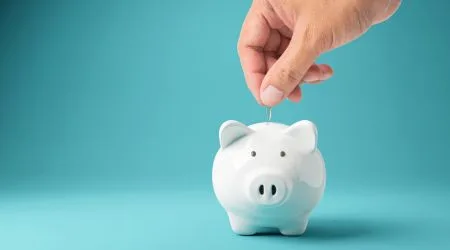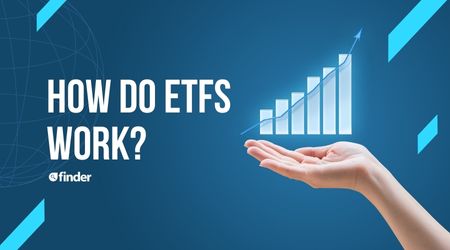IPO investing can present exciting opportunities to profit from businesses with growth potential. We break down what an initial public offering is, why companies go public and the pros and cons of IPO investing.
What is an IPO?
An initial public offering (IPO) is the process by which a company goes from privately owned to publicly owned by selling small units of ownership (called shares) to the public on a stock exchange. This is also known as going public and gives individuals and businesses a chance to invest in companies.
Why do companies go public?
Companies go public to raise money. Alternatively, funds could be raised from sources like other companies, investment managers or wealthy investors. Money raised from an IPO may be used to:
- Research and develop new technology or infrastructure
- Expand into other markets
- Launch new products
- Hire more staff
- Market the company or gain prestige
- Offer more favorable credit-borrowing terms
SPACs: An IPO alternative
A special purpose acquisitions company (SPAC) is a company that goes public to raise money from investors and then uses the funds to acquire a private company within 2 years. Going public by merging with an SPAC is quicker and easier than going public through a traditional IPO. SPACs are “blank cheque” companies that exist on paper but have no commercial operations.
Direct listing: An IPO alternative
When conducting an IPO, companies usually have to work with investment banks to create and sell new stocks to the public. Through direct listings, companies bypass investment banks and sell stocks directly to the public. This is cheaper than traditional IPOs.
How do IPOs work?
Before it goes public, a company is privately owned by shareholders like its founds and/or other investment companies. When a company decides to go public, it must file a registration statement with the appropriate investment regulatory body.
In Canada, this is the provincial or territorial regulatory body where a company is headquartered. (If not headquartered in Ontario, companies that plan to sell stocks in Ontario must also file with the Ontario Securities Commission.) In the United States, this is the US Securities and Exchange Commission (SEC).
The registration documents are reviewed for compliance. Revisions may be made. Once approved, the process continues with the underwriters. These are typically the investment banks that manage the public offering and determine the IPO share price.
While the company waits to go public, it will apply to be listed on a stock exchange like the Toronto Stock Exchange (TSX) or the New York Stock Exchange (NYSE). Companies must remain transparent to investors by regularly disclosing financial statements.
Finder survey: When choosing a stock trading platform, which factors matter most to Canadians of different ages?
Response | Gen Z | Gen Y | Gen X | Baby Boomers |
|---|---|---|---|---|
| Fees | 60.67% | 73.14% | 71.73% | 86.82% |
| Provider reputation | 42.26% | 41.43% | 39.58% | 52.71% |
| Trading tools and platforms | 38.08% | 31.71% | 30.74% | 15.5% |
| Customer service | 34.73% | 34.57% | 36.75% | 32.56% |
| Minimum account balance | 34.31% | 36.86% | 40.64% | 34.88% |
| Number of investments | 33.05% | 28.86% | 17.31% | 17.05% |
| Investment types covered | 30.96% | 31.43% | 37.1% | 41.86% |
| Whether commission free ETFs are covered | 25.94% | 22% | 26.15% | 18.6% |
Open a trading account to buy IPO stocks
Finder Score for stock trading platforms
To make comparing even easier we came up with the Finder Score. Trading costs, account fees and features across 10+ stock trading platforms and apps are all weighted and scaled to produce a score out of 10. The higher the score the better the platform - simple.
IPO prospectus: Company insight
Along with registration forms, a company must submit a prospectus with important information like financial data, the company’s profile, the products or services it offers, IPO terms, how IPO earnings will be used and more. Before buying IPO stocks, investors should become familiar with a company by reading its prospectus.
How are IPO stock prices set?
Companies hire investment banks to underwrite IPOs. An underwriter acts as an intermediary, buying stocks from issuers and selling those stocks to investors. The underwriter helps determine how to price stocks. IPOs offer a predetermined number of stocks at a price that stays the same rather than changing throughout the day like stocks on the TSX.
IPO share price is determined by:
- The company’s current value
- Potential future earnings of the company
- Number of shares offered
Common IPO terms
- Common stock. These stocks are sold through an IPO. Common stock typically comes with voting rights, but sometimes a company may decide to offer dual-class common stock with higher voting rights.
- Issue price. Also known as the offering price, this is the price at which stock will start selling during an IPO.
- Offering date. The first day the company publicly offers its shares.
- Flipping. This is when an investor buys shares during an IPO and sells those shares within a specific time period — typically 15 days. Most platforms that offer IPO shares condemn this behavior and may limit investors from buying into future IPOs.
- Float. The number of stocks available to investors.
- Underwriter. An investment bank that manages the IPO and sells shares to potential investors.
- Lock-up period. The time frame after an IPO when the underwriter restricts insiders from selling shares in the secondary market.
- Price range. The price at which the company expects to sell its shares in the IPO.
Should you invest in initial public offerings?
Before investing in IPOs, consider macroeconomic factors. For example, in periods of high inflation and rising interest rates, the stock market will likely underperform, because the cost of borrowing money for “riskier” plays is high.
When interest rates are low and the cost of borrowing money is cheaper, the stock market will likely outperform other assets. A company that goes public during these times will likely be equally affected.
Another factor to consider is the company itself and the potential to return value to investors. For example, a company in the healthcare sector that’s building a particular product goes public to raise funds for research and development or to cover operation costs.
Doing this is a high-risk bet because the company may fail to deliver the product or the product may not be as great as advertised. This will negatively affect the price and it will likely drop below the IPO price.
The opposite may also happen. The company succeeds with its product and the market price goes way above the IPO price. Typically, you can avoid such downfalls by choosing great companies with strong competitive moat and solid products and services. But this requires due diligence on your part.
Let’s look at some examples of how popular companies performed after the IPO.
Rivian (RIVN)
Rivian Automotive was one of the hottest IPOs during the bull market of 2021. Its high profile investors such as Amazon (AMZN) and Ford (F) combined with a solid selection of electric vehicles by Rivian draw major investor interest.
The company went public at a price of $78 USD. Within days after the IPO, RIVN traded at above $130 USD. However, this coincided with the bull market peak in November 2021. After that, the price of RIVN continuously dropped, trading at around $30 USD only 12 months post-IPO.
Robinhood (HOOD)
Robinhood is another example of a company going public during the height of the bull market. The company went public in July 2021 at a share price of $38 USD.
One month later, the share price traded at over $60 USD. 12 months later, HOOD traded at around $8 USD. The reason for the drop can be attributed to macroeconomic factors, mostly because trading volume fell due to the bear market in stocks and crypto.
Snowflake (SNOW)
Snowflake — a cloud software company — debuted in September 2020 at a $245 USD IPO price. This was during favorable macroeconomic conditions and the stock price hit $400 USD just 3 months post-IPO.
After that, the price dropped to below IPO levels. Luckily, it was back at $400 USD at the height of the bull market in November 2021. Similar to most stocks, SNOW dropped to $170 USD at 24 months after its IPO.
Pros and cons of investing in IPOs
- Fixed stock price. Unlike regular stocks, IPOs offer a fixed price per stock that won’t change until the market opens.
- Get in early. Investing in an IPO lets you be among the first to buy stocks in a company before it’s listed on an exchange.
- Potentially sell your stocks for a profit. Stock in well-known brands can rise significantly after an IPO. If your stock goes up following an IPO, you could sell it at a profit. But this is a high-risk strategy. Past performance is no guarantee of future performance.
- The stock price could be overvalued. The IPO stock price might not be fair, and you might pay more than your stock is worth.
- New companies can be high-risk. Many IPOs are for new companies that have been operating for only a few years. These companies are often still growing and are likely to be higher risk and more volatile than other stocks.
Bottom line
- Companies that want to go public hold IPOs and sell stocks on a stock exchange.
- Many large institutes and high-dollar investors embrace IPO investments, but everyday investors can buy in through platforms like Questrade, Qtrade, Scotia iTRADE and BMO InvestorLine.
- Anyone can buy stocks that are publicly listed after an IPO is over, but the price will differ from the IPO stock price.
Frequently asked questions
More on investing

What are the best stocks for beginners with little money to invest?
Want to dive into investing but don’t have much to spend? Take a look at these types of stocks.
Read more…
Meme stocks: What they are and examples of popular stocks
Meme stocks can produce large gains in short periods, but the stocks are volatile.
Read more…
How do ETFs work?
Your guide to how ETFs work and whether this type of investment is right for you.
Read more…More guides on Finder
-
Best paper trading platforms and demo accounts for 2025
How to choose the best paper trading platform to help you learn the ins and outs of investing.
-
Quantum computing stocks
Microsoft, IBM, IONQ, Rigetti and Quantum Computing are some of the top stocks to buy in this category. See how to get started here.
-
How will tariffs affect the stock market?
Find out how the Trump tariffs will impact the stock market and explore Canadian stocks that may be resilient amidst tariffs.
-
What are the best stocks for beginners with little money to invest?
Want to dive into investing but don’t have much to spend? Take a look at these types of stocks.
-
Trading promos & investment account bonuses for 2025
Enjoy perks like free trades and cash back when you open a stock trading account with these online broker promotions.
-
TD Easy Trade review
Use this self-directed trading app to learn the basics of investing with a streamlined app and a number of free trades annually.
-
Best renewable energy stocks
These are the best renewable energy stocks to buy now in Canada.
-
10 best trading platforms and apps in Canada for 2025
Whether you’re a new or experienced investor, these are the best stock trading platforms and apps in Canada.
-
TD Direct Investing Review
Make quick and easy trades using this reputable online trading platform from TD.
-
Questrade review
Questrade is a leader among Canadian discount brokerages, but is it right for you? Compare fees, features and alternatives here.

